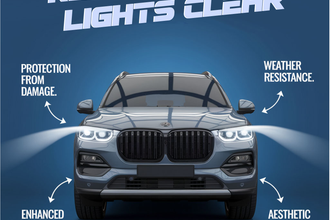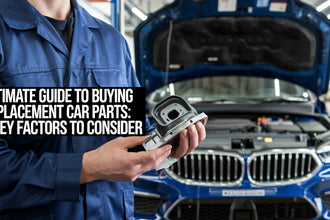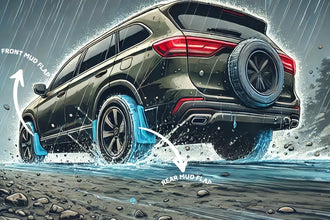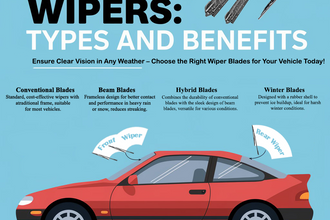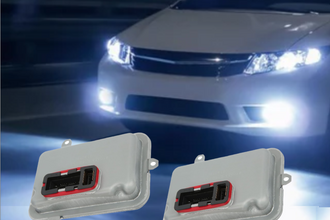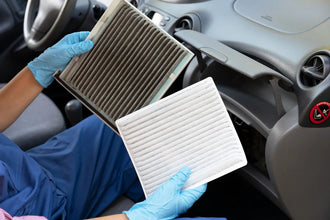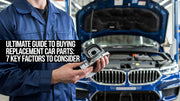
When it comes to maintaining your vehicle, purchasing the right replacement parts is crucial. Making informed decisions can save you time and money while ensuring your car runs smoothly. In this comprehensive guide, we’ll explore seven key factors to consider when buying replacement car parts, along with essential tips for maintaining your vehicle’s spare parts.
Quality and Reliability: Choose the Best Parts
When looking for replacement parts, prioritize quality and reliability. OEM (Original Equipment Manufacturer) parts are usually the best choice, as they guarantee a perfect fit and optimal performance. Although aftermarket parts can be viable alternatives, ensure they meet industry standards and have positive reviews
Compatibility: Ensure the Perfect Fit
Before purchasing, check that the part is compatible with your vehicle’s make and model. This can prevent costly returns and ensure proper installation. Always refer to your owner’s manual or consult with a professional mechanic for confirmation.
Warranty and Return Policy: Protect Your Investment
Look for parts that come with a solid warranty. A strong return policy can also safeguard you against defective items or wrong purchases. This way, you can shop with confidence knowing your investment is protected.
Price vs. Value: Invest Wisely
While it’s tempting to opt for cheaper alternatives, consider the long-term value. High-quality parts may come at a higher price but can save you money on repairs and replacements in the future. Always evaluate the overall value rather than just the upfront cost.
Supplier Reputation: Buy from Trusted Sources
Research your supplier before making a purchase. Look for customer reviews and ratings to ensure they have a proven history of reliable service and quality products. A reputable supplier can make a significant difference in your purchasing experience.
Installation: DIY or Professional Help?
Consider whether you’ll be installing the part yourself or hiring a professional. Some parts may require specialized tools or expertise, which could influence your decision. If you’re unsure, consulting a mechanic can provide clarity.
Availability of Parts: Plan Ahead
Check the availability of parts before purchasing. Rare or discontinued parts may take longer to obtain, potentially delaying repairs. Being proactive can save you time and frustration.
Ultimate Guide to Maintaining Your Car Spare Parts
To ensure longevity and performance, follow these essential maintenance tips:
Regular Inspections
Perform frequent inspections of spare parts for signs of wear and tear. Components like belts, hoses, and filters should be checked regularly to catch issues early.
Cleanliness is Key
Keep parts clean and free from dirt and debris. Accumulation of grime can lead to corrosion and performance issues.
Proper Storage Techniques
Store spare parts in a cool, dry place to prevent rust and deterioration. Protect them from extreme temperatures and humidity.
Monitor Usage
Track mileage and usage for parts that wear out faster, such as brake pads and oil filters. This will help you schedule timely replacements.
Consult Professionals When Needed
When in doubt, consult a mechanic or automotive expert for advice on maintenance and replacement schedules.
Key Parts to Replace Regularly
To keep your vehicle running smoothly, here’s a list of essential parts to replace regularly:
Oil Filter: Change every 3,000 to 7,500 miles to ensure clean oil circulates, promoting engine performance and longevity.
Air Filter: Replace every 15,000 to 30,000 miles to prevent dirt from entering the engine, enhancing efficiency and power.
Brake Pads: Inspect every 20,000 miles; replace as needed to maintain effective braking and ensure safety.
Battery: Typically lasts 3-5 years; replace when it shows signs of weakness to avoid starting issues.
Wiper Blades: Replace every 6 to 12 months to maintain clear visibility during rain and enhance safety.
Tires: Monitor tread depth and replace when worn (usually every 25,000 to 50,000 miles) to ensure proper traction and handling.
Spark Plugs: Replace every 30,000 to 100,000 miles depending on type to prevent misfires and maintain fuel efficiency.
Fuel Filter: Change every 20,000 to 40,000 miles to avoid clogging that can restrict fuel flow and affect performance.
Timing Belt: Replace every 60,000 to 100,000 miles to prevent severe engine damage from belt failure.
Serpentine Belt: Check and replace every 50,000 to 70,000 miles to ensure proper function of engine accessories.
Transmission Fluid: Change every 30,000 to 60,000 miles to prevent shifting problems and prolong transmission life.
Coolant: Flush every 30,000 to 50,000 miles to prevent overheating and corrosion in the engine.
Cabin Air Filter: Change every 15,000 to 30,000 miles to improve air quality and ensure effective HVAC operation.
Turbocharger: Turbocharger should be replaced every 100,000 to 150,000 miles its can help maintain optimal vehicle performance.
Oxygen Sensors: Replace every 30,000 to 100,000 miles to maintain fuel efficiency and reduce emissions.
Wiper Fluid: Check regularly and refill as needed to ensure visibility in adverse weather conditions.
Conclusion
By considering these factors and following maintenance tips, you can ensure your vehicle remains reliable and safe on the road. Regular maintenance of spare parts enhances performance and longevity, ultimately saving you money in the long run. Remember, investing in quality parts and maintenance will pay off with a smoother, safer driving experience.





